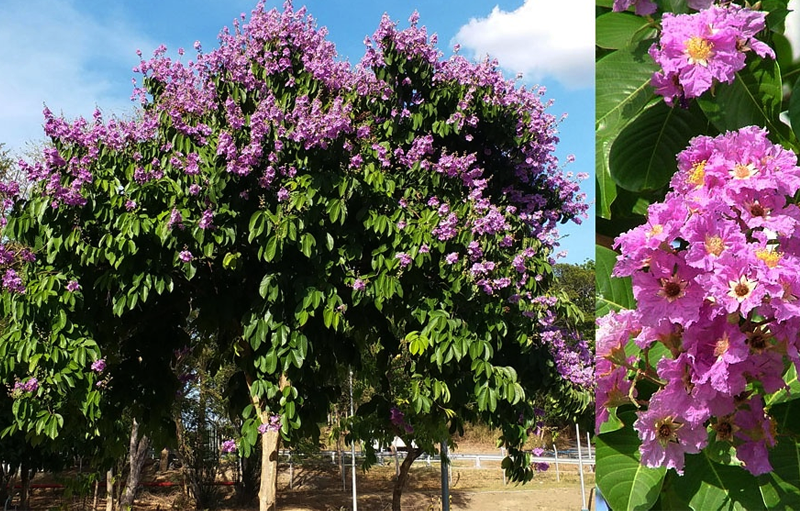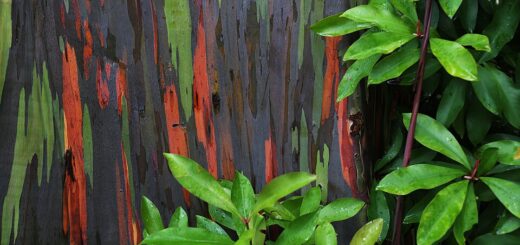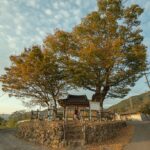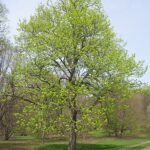Banaba Tree – Nature’s Gift of Beauty and Wellness

Banaba trees (Lagerstroemia speciosa) are native trees that are widely distributed in the Philippines and southern Asia Country. It is beautiful tree with bright pink to light purple flowers. They mostly seen in secondary forests at low and medium altitudes. Banaba trees grow up to 30 meters high and a diameter of about 40 centimeters. It has a gray bark with slight yellowish lines showing through smooth but very fine longitudinal markings close together.
Banaba wood is mainly used for agricultural implements while its leaves are sourced for its medicinal value. Overall, the Banaba is an excellent landscaping and ornamental plant owing to it’s beautiful purple flowers.
Banaba Tree – A Natural Healer
One of the biggest reasons Banaba is cherished is its medicinal value, particularly in traditional Filipino, Indian, and Southeast Asian medicine. The leaves, bark, and even flowers are packed with compounds like corosolic acid, which has been studied for its potential blood sugar-lowering effects.
Health Benefits of Banaba:
🩺 Diabetes Management – Traditionally, Banaba tea made from the dried leaves is used to help regulate blood sugar. Modern research supports this use, noting its insulin-like effects.
💧 Weight Management & Detox – Banaba is known for its diuretic properties, helping flush toxins and excess fluids from the body.
🌿 Antioxidant Power – The leaves contain antioxidants that help fight inflammation and oxidative stress.
🧘🏽 Digestive Aid – It’s also been used to relieve constipation and support overall gut health.
No wonder it’s sometimes referred to as a natural alternative to Metformin!
How to Use Banaba
Banabá is most commonly used in the form of herbal tea. You can find dried leaves in local herbal shops or health food stores, often labeled as Banaba Tea or Lagerstroemia Speciosa Tea.
Simple Banaba Tea Recipe:
– Take 1–2 teaspoons of dried Banaba leaves.
– Boil in 2 cups of water for 10–15 minutes.
– Strain and enjoy warm or chilled.
Disclaimer
Please consult your doctor before using any herbal medicine, particularly if you have a known medical condition or if you are pregnant or nursing. You are responsible for your own health. As with conventional medicine, herbal medicine is vast and complex, and must be used responsibly.
Beyond Health: The Environmental Value
The Banaba tree isn’t just good for the body, it’s great for the environment too. Its large canopy provides shade and habitat for birds and pollinators. It’s also drought-resistant and helps in controlling soil erosion, making it a wise pick for reforestation and urban greening efforts.
Cultural Significance
In the Philippines, Banaba is more than a medicinal plant—it’s part of local heritage. It blooms in summer, often signaling the start of the dry season. In some regions, it’s even celebrated with local festivals when it bursts into full bloom.
Nature Beauty and Utility
The Banaba tree is a perfect example of how nature blends beauty and utility. Whether you’re sipping Banabá tea for its health perks or simply admiring its vibrant flowers, this tree is a reminder of how plants can heal, nourish, and inspire us.
If you have access to one, take a moment to appreciate its towering presence and delicate blooms. And if you haven’t yet, maybe it’s time to brew yourself a cup of Banaba tea and toast to this tropical treasure.
References:
Wikipedia










